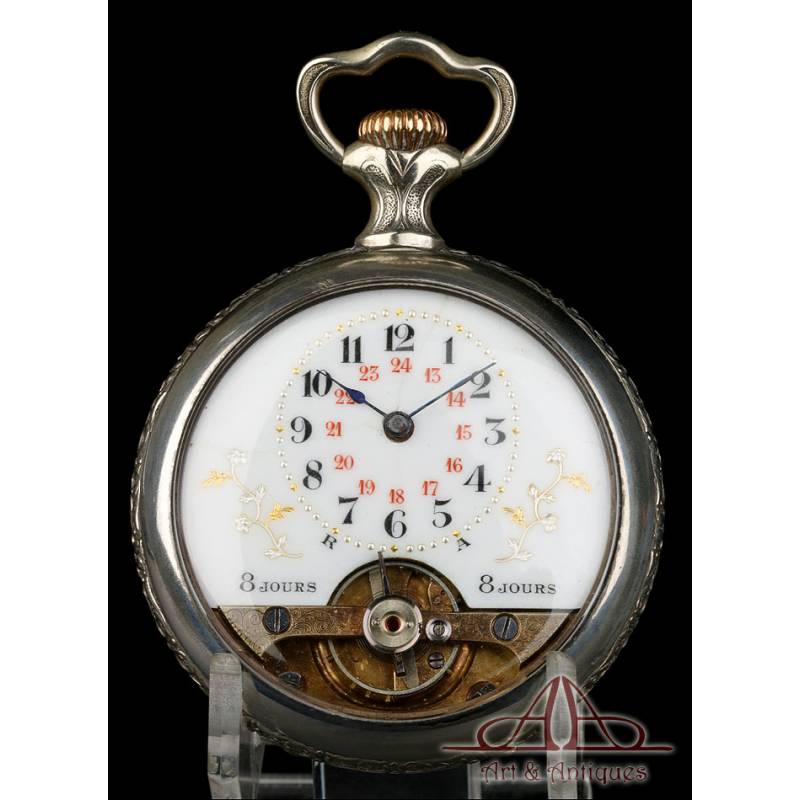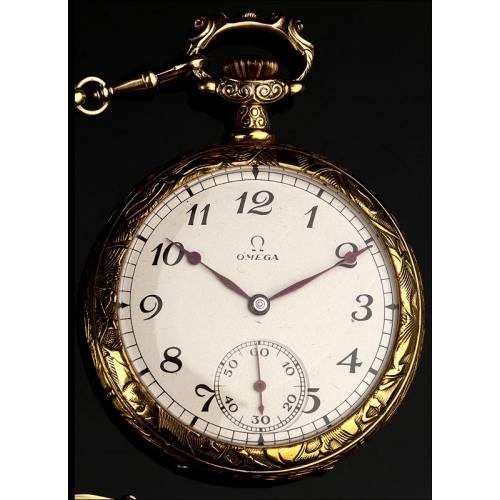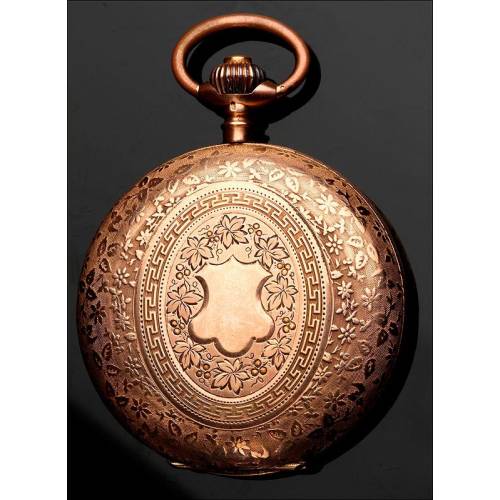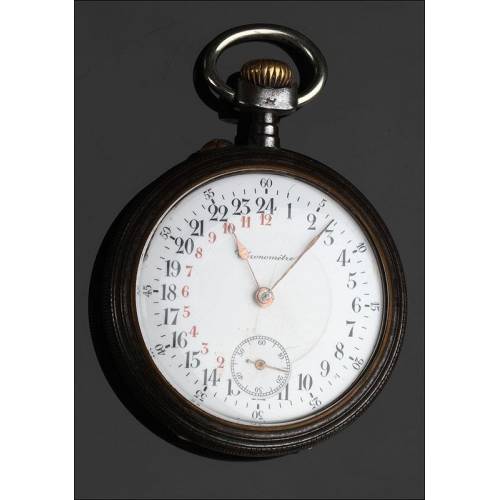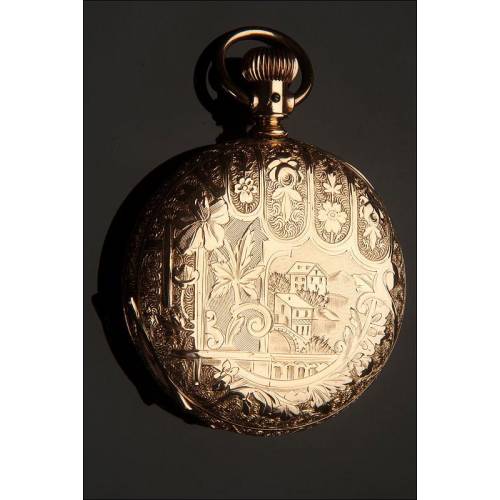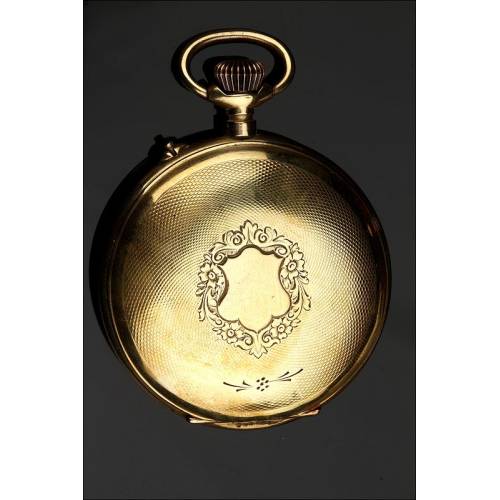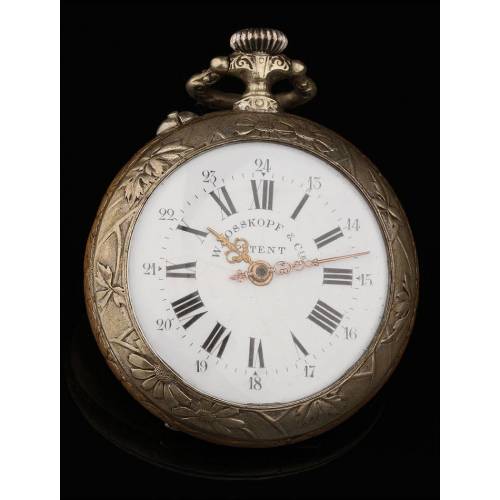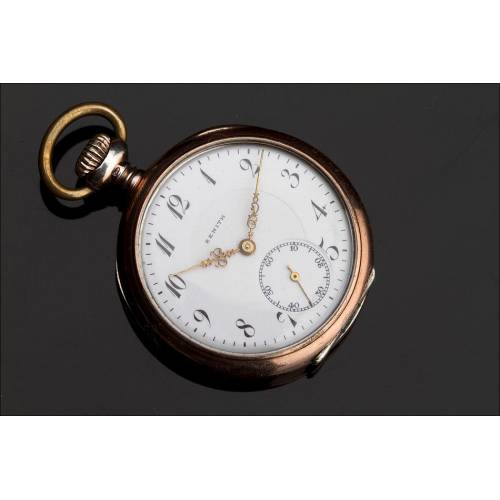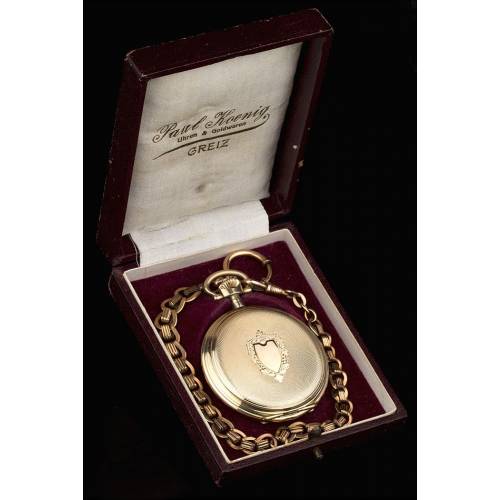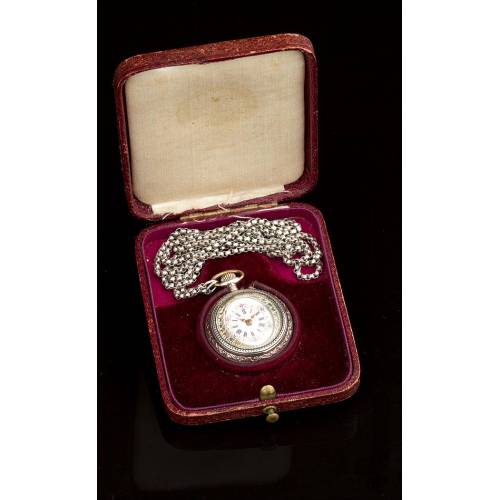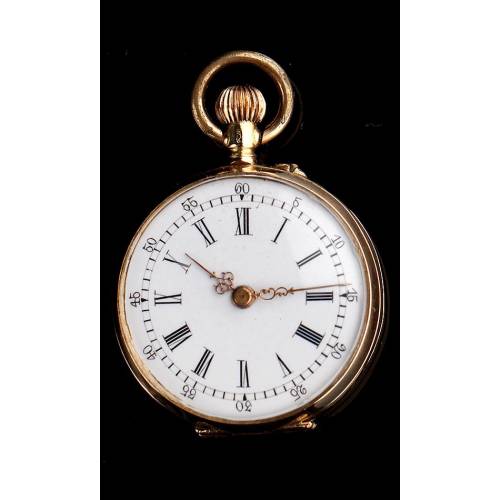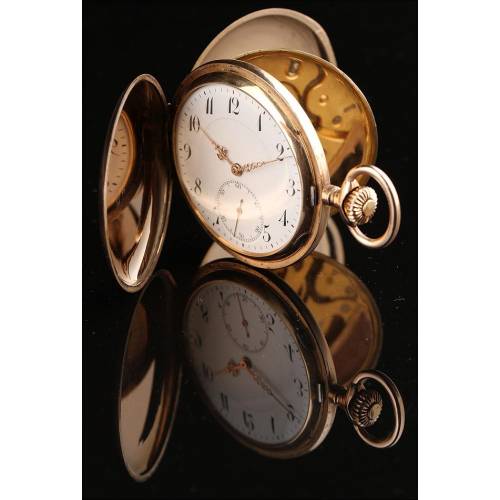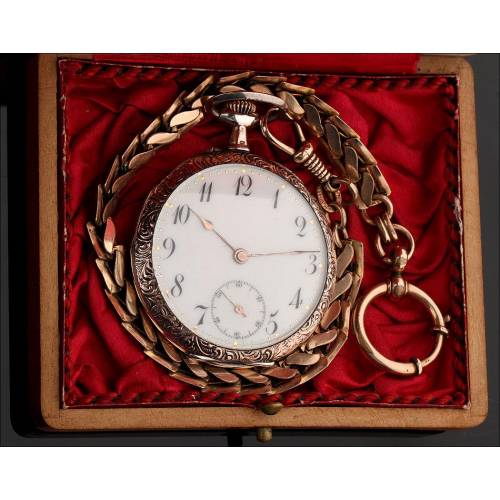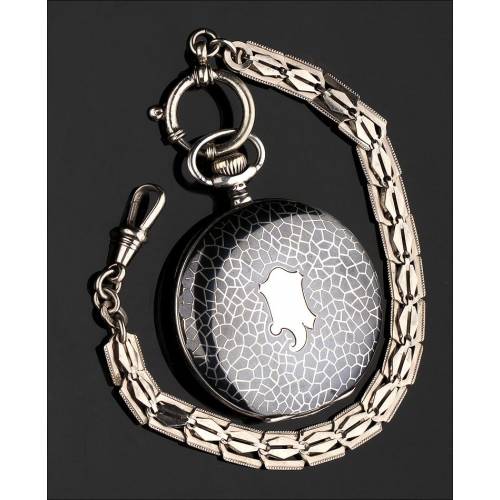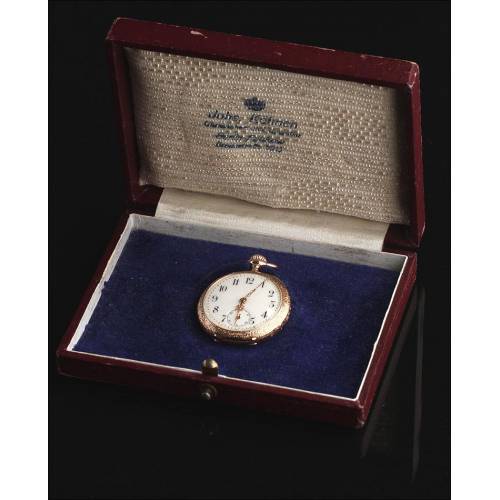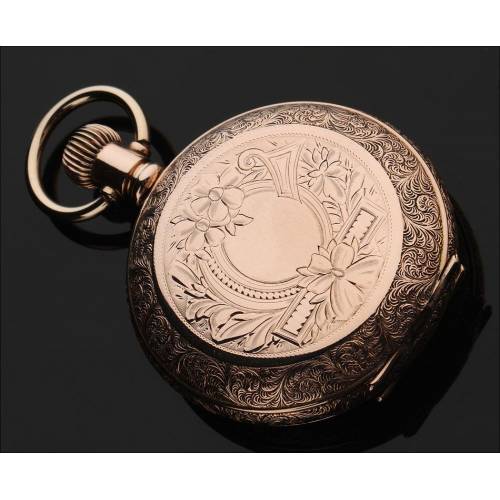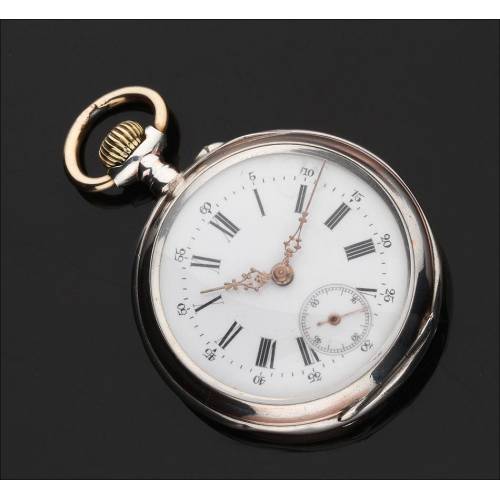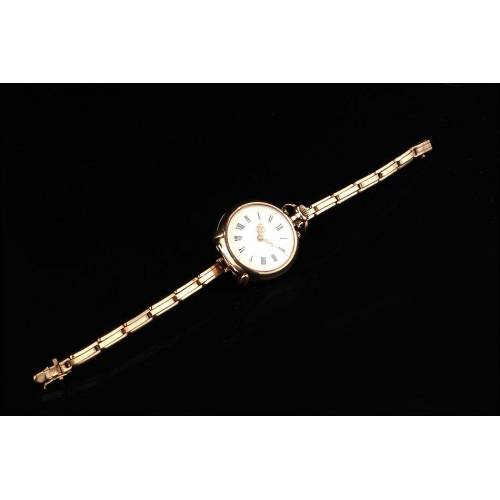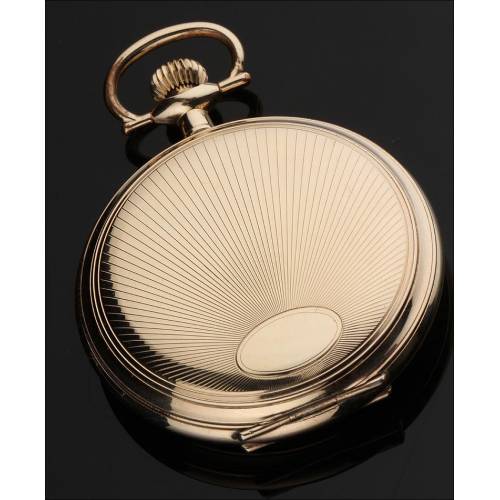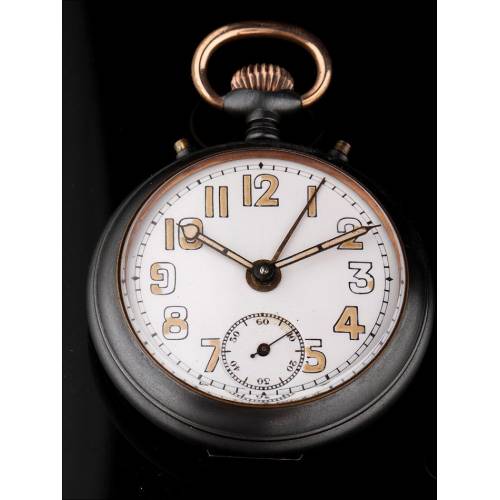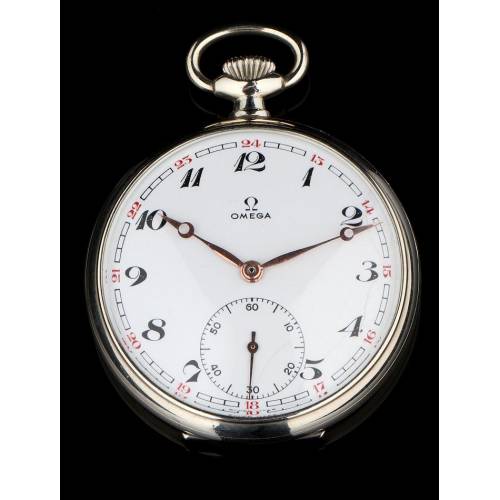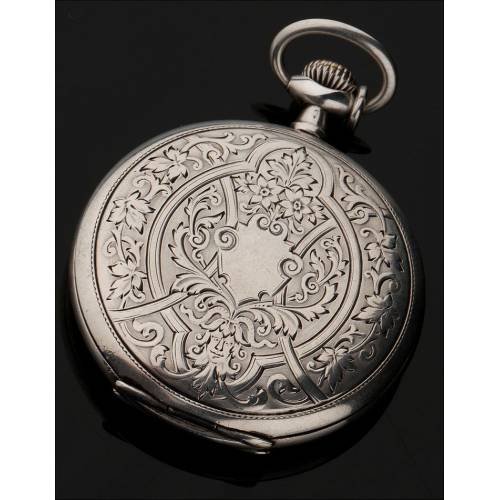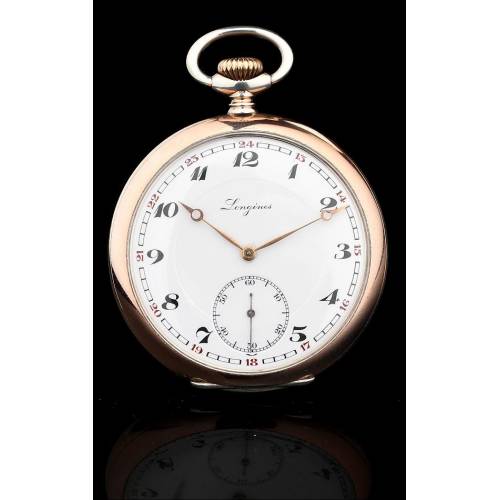C-926
Antique Hebdomass type Pocket Watch. Saint George and the Dragon. Circa 1920
Beautiful Hebdomass pocket watch in excellent condition. Works very well and keeps the winding for 8 days. Perfect for collectors.
Sold!
Antique Hebdomas-type pocket watch with an image of Saint George and the Dragon, dated circa 1920 and in fine condition. The movement is similar to the one designed by Iréné Aubry de Saignelégier in the late 19th century and produced by Graizely & Cie (and later by Schield & Cie) makes it possible to wind the watch up just once a week. For this reason, Hebdomas-type watches and clocks are considered the predecessors of automatic models. The one that we can see in the images boasts a neat and fine design enhanced by the beautiful embossed decoration of the rear cap, and by the movements excellent working order. The dial, protected by a glass cap with an engraved metal Crown, is typical of Hebdomas-type pocket watches. It is made of white porcelain and is decorated with delicate floral details made of silvery and golden metal. The double time scale (12/24 hours) is created with black and red Arab numbers and includes paved straight hands. We can also see the inscription 8 JOURS that identifies the movement type. The bottom part of the dial is open and let us see part of the inner movement, an attractive and original feature that turns this watches into pieces of a great aesthetic interest. The rear cap is decorated with a hand-made embossed image of Saint George fighting the Dragon. The saint is identified by the inscription located at the top. Its original design and excellent workind order turn this antique Hebdomas-type pocket watch with an image of Saint George and the Dragon into a wonderful collectors piece. Measurements: Width: 50 mm.Hebdomas Watches History Hebdomas watches were initially produced by Graizely & Co., a Swiss watchmaker company founded in the late 19th century by Arthur Graizely and Otto Schild to make and sell a design created by Iréné Aubry de Saignelégier in 1888. This was an ingenious clock movement which had to be wounded just once a week. The name comes from the term Eddomadario, related to the Greek Ebdomee festivity. This celebration took place the seventh day of each month and was held to commemorate Apolos birth. In 1892 the company starts commercializing their watches under the Hebdomas brand name. They became very successful and the firm grew exponentially until 1914, when it was acquired by Schild who changed its name to Schield & Cie. Then, production focused on wrist watches and more brands and sub-brands were created. The patent got disseminated and many watchmaking firms started manufacturing Hebdomas-type movements. After many viccisitudes, today Hebdomas still exists as a prestigious manufacturer of high-end wrist and pocket watches, exclusive for collectors.

